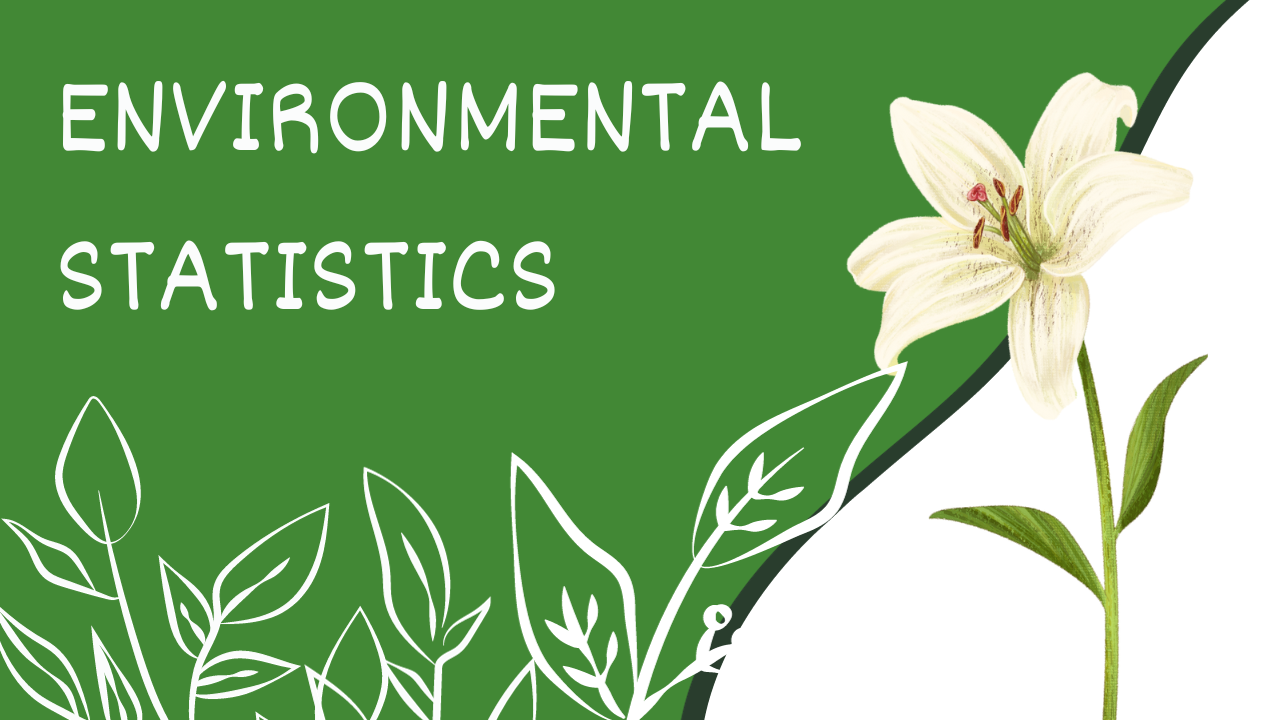In an era marked by growing concerns over the environment and climate change, the application of statistical methods to environmental studies has become increasingly crucial. The intersection of environmental science and statistics provides us with powerful tools to analyze complex data sets, enabling a deeper understanding of the patterns and trends associated with climate change. It is one of the most crucial applications of statistics. Students can have the statistics assignment help to write the best assignments on this topic. In this article, we delve into the realm of environmental statistics, exploring how statistical methods contribute to our comprehension of climate change and its impacts.
Understanding the Role of Statistics in Environmental Studies:
Statistics plays a pivotal role in environmental studies by providing the means to analyze and interpret vast amounts of data collected from various sources. From temperature records to atmospheric composition data, statistical methods allow scientists to discern patterns, identify anomalies, and draw meaningful conclusions from the plethora of information available.
1. Descriptive Statistics in Environmental Studies:
Descriptive statistics serve as the foundation for understanding the basic features of climate data. Measures such as mean temperature, precipitation averages, and frequency distributions help in summarizing and presenting key aspects of environmental variables. This enables scientists to communicate data trends effectively and facilitates comparisons across different regions and time periods.
Furthermore, the use of graphical representations, such as histograms and box plots, aids in visually conveying the distribution of environmental data. This visual storytelling enhances the accessibility of complex information for a broader audience, fostering greater awareness and understanding.
2. Time Series Analysis:
One of the key challenges in climate change studies is dealing with temporal data. Time series analysis, a statistical technique, is employed to identify trends, seasonality, and irregularities in environmental variables over time. This allows researchers to distinguish natural climate variability from long-term trends associated with global warming.
Moreover, time series analysis facilitates the detection of abrupt changes or shifts in climate patterns, aiding scientists in pinpointing specific events or periods that may require further investigation. This analytical approach enhances the precision of climate change assessments.
3. Spatial Analysis:
Climate data often exhibit spatial patterns, with variations in temperature, precipitation, and other variables across geographical locations. Spatial analysis, utilizing techniques like Geographic Information Systems (GIS) and spatial autocorrelation, helps in understanding the spatial distribution of environmental factors and their interconnectedness.
Spatial analysis is particularly valuable in identifying hotspots of environmental changes, assisting policymakers in directing resources and interventions to areas most vulnerable to the impacts of climate change. The integration of spatial statistics with environmental studies provides a comprehensive view of the complex interplay between geographical factors and climate variables.
Analyzing Climate Change Data:
Now, let’s explore how statistical methods are specifically applied to analyze climate change data, contributing to our understanding of this global phenomenon.
- Trend Analysis:
Trend analysis involves examining long-term data to identify significant trends or changes in climate variables. Statistical methods such as linear regression help quantify the rate at which temperatures, sea levels, or other indicators are changing. Through trend analysis, scientists can discern whether observed changes are within the range of natural variability or if they signify a more significant shift linked to climate change.
Additionally, trend analysis provides the basis for predictive modeling, allowing scientists to extrapolate future climate scenarios based on historical data trends. This proactive approach is essential for developing effective climate change mitigation and adaptation strategies.
2. Extreme Event Analysis:
Climate change is often associated with an increase in the frequency and intensity of extreme weather events. Statistical methods, such as extreme value theory, are employed to analyze data related to heatwaves, hurricanes, floods, and droughts. This enables scientists to assess the likelihood of extreme events and their potential impacts on ecosystems and communities.
Furthermore, the integration of extreme event analysis with risk assessment enhances our ability to anticipate and prepare for the potential consequences of extreme weather occurrences. This proactive risk management approach is critical for minimizing the societal and environmental impacts of climate-induced extremes.
3. Uncertainty and Risk Assessment:
Statistical methods are crucial in quantifying uncertainties associated with climate change predictions. Monte Carlo simulations and probabilistic modeling help assess the range of potential outcomes and associated risks. Understanding uncertainties is vital for policymakers and communities to make informed decisions in the face of a changing climate.
Moreover, uncertainty and risk assessment provide a basis for scenario planning, allowing decision-makers to consider a range of possible futures and develop adaptive strategies that account for multiple contingencies. This comprehensive approach to uncertainty management enhances the resilience of communities and ecosystems in the face of dynamic and uncertain environmental changes.
Conclusion:
In conclusion, environmental statistics is a powerful tool that enhances our ability to comprehend and address the challenges posed by climate change. By applying statistical methods to environmental studies, scientists gain valuable insights into the dynamics of our planet, helping us make informed decisions to mitigate the impacts of climate change.
As we continue to grapple with the complexities of a changing climate, the synergy between environmental science and statistics remains a beacon of hope for a sustainable future. The ongoing refinement and application of statistical techniques contribute not only to our understanding of climate change but also to the development of robust strategies for fostering environmental resilience and global sustainability. Through a multidisciplinary approach that combines scientific rigor with statistical acumen, we can navigate the challenges of our changing world and work towards a harmonious coexistence with the environment.
